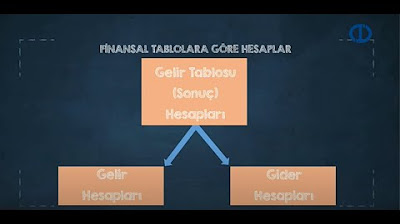T Accounts Explained SIMPLY (With 5 Examples)
Summary
TLDRIn this educational video, James from Accounting Stuff dives into the world of T-Accounts, a fundamental tool in accounting for visualizing financial transactions. He explains the concept of accounts, the structure of T-Accounts with debits on the left and credits on the right, and introduces the DEALER mnemonic to help remember which accounts are affected by debits and credits. James also covers the General Ledger and the principles of Double-Entry Bookkeeping, illustrating these concepts with a series of transactions from his own window cleaning business. The video aims to demystify accounting basics and make T-Accounting accessible to beginners.
Takeaways
- 📚 T-Accounts are a fundamental tool in accounting, used to visualize and track financial transactions.
- 🔍 An Account is a record-keeping entity for transactions related to a specific item or aspect of a business.
- 📊 T Accounts get their name from their T-shape, which helps distinguish between debits and credits.
- 💡 The General Ledger is a comprehensive record of all financial transactions and accounts within a business.
- 📈 Debits are recorded on the left side of a T Account, and credits on the right, reflecting increases and decreases in account balances.
- 🧩 The DEALER mnemonic aids in remembering which accounts are affected by debits and credits: Dividends, Expenses, Assets, Liabilities, Owner's Equity, and Revenue.
- 💼 T Accounts are especially useful for new accountants to visualize transactions and understand the double-entry bookkeeping system.
- 🔄 Double-Entry Bookkeeping ensures that every financial transaction is recorded in at least two accounts, reflecting the impact on different aspects of the business.
- 💡 The script provides a practical example of how T Accounts are used to record the first month's transactions for a window cleaning business.
- 📝 The video concludes with a call to action for viewers to share their thoughts on the usefulness of T Accounts and to engage with the content by liking and subscribing.
Q & A
What is the primary purpose of T-Accounts in accounting?
-T-Accounts are used to visually represent and track the debits and credits that impact an account, helping to organize and understand financial transactions.
How are debits and credits distinguished in a T-Account?
-Debits are recorded on the left side of a T-Account, while credits are recorded on the right side.
What does the acronym 'DEALER' stand for in the context of accounting?
-DEALER is a mnemonic to remember which accounts are debits and credits. It stands for Dividends, Expenses, Assets, Liabilities, Equity, and Revenue, with the first three increasing on the debit side and the last three increasing on the credit side.
What is the General Ledger, as mentioned in the script?
-The General Ledger is a comprehensive record-keeping system where a business stores all of its financial transactions and accounts.
Why is the opening balance of an account recorded in a T-Account?
-The opening balance is recorded to show the account's starting position before any transactions occur, providing a base for tracking changes throughout the accounting period.
How does the concept of 'Double-Entry Bookkeeping' relate to T-Accounts?
-Double-Entry Bookkeeping requires that every financial transaction is recorded in at least two T-Accounts, reflecting the dual impact of the transaction on different accounts.
What is the significance of the closing balance in a T-Account?
-The closing balance represents the account's total after all transactions for the period have been recorded, showing the final position of the account.
Why might a closing balance be recorded on the right side of a T-Account?
-A closing balance might be recorded on the right side of a T-Account if it is a negative number, indicating an overdraft or a liability.
How does the script use the example of a window cleaning business to illustrate T-Account usage?
-The script uses the window cleaning business to demonstrate how T-Accounts are used to record various transactions such as investments, loans, purchases, and revenue, showing the impact on different accounts.
What is the term for recognizing a liability when goods are purchased but not yet paid for?
-Paying for something 'On Account' means that the goods are received but payment is due at a later date, creating a liability that is recorded in the T-Accounts.
How does the script explain the transition of supplies from an asset to an expense?
-The script explains that when supplies are used in a business transaction, they transition from being an asset to being a cost of sales, which is an expense, and this is reflected in the T-Accounts by debiting the supplies and crediting the cost of sales.
Outlines

This section is available to paid users only. Please upgrade to access this part.
Upgrade NowMindmap

This section is available to paid users only. Please upgrade to access this part.
Upgrade NowKeywords

This section is available to paid users only. Please upgrade to access this part.
Upgrade NowHighlights

This section is available to paid users only. Please upgrade to access this part.
Upgrade NowTranscripts

This section is available to paid users only. Please upgrade to access this part.
Upgrade Now5.0 / 5 (0 votes)





